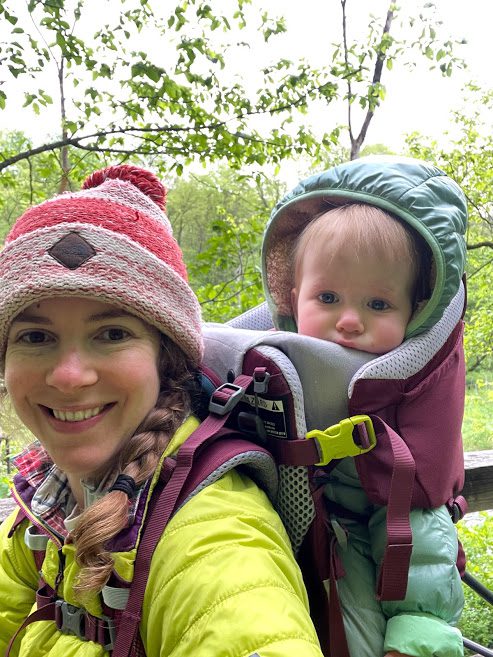By Arielle Courtney MS
Nature gives us life, by providing water to drink, food to eat, and oxygen to breathe. But it also gives us something more, something harder to describe. Many people find if they visit a national park or other wild landscape, they are in “awe” of its beauty and it touches them in a way that few other things can. This inspiration is good for keeping us joyful, inspired, and calm. It provides respite for adults and children alike.
While this is a gut instinct for many of us, increasing numbers of research studies over the years have added to the evidence showing that nature does in fact make us happier, calmer, and healthier. One interesting study from Australia takes this data to the next level: how much and what type of nature do we need? I love to share the concept of a “nature dose,” because it truly hits home for many people the idea that nature is vital to our collective well-being.

Figure 1 First presented in Tim Beatley (Aug 2012). Exploring the Nature Pyramid. The Nature of Cities.
How do I get my nature dose?
Using the nature dose pyramid above, it is clear that the most important way to get outside is frequent, close-to-home nature experiences. These can happen for short amounts of time on a daily basis: reading or picnicking outside, playing with your children at a neighborhood park, gardening, or walking the dog.
Most people have a good idea of how to get their “daily” nature dose. However, people usually want more help planning bigger trips or new nature experiences. These require additional forethought and sometimes learning a new skill, depending on what you want to do. Just keep in mind that you don’t have to climb a mountain to enjoy the outdoors, no matter how far away you might travel.
Where to go?
What to do? And how to do it?
A few examples of guided activities:
-
- Family-based trips or camps (e.g., YMCA Family Camps)
- Hike It Baby: Hiking groups for families and moms with young children
- Naturalist or ranger programs
- Nature Center programs
- Outward Bound expeditions or programs
- Recreational Equipment Incorporated (REI) classes or trips
Are there benefits or programs for veterans or military families?
Free Veteran and Military Passes
Most public lands will offer free or discounted park passes, fishing licenses, and hunting licenses for Service members, veterans, and military families. Be sure to check with your local natural resource department or park department for this information.
Wilderness-based Therapy Programs for Service Members or Veterans
There is also a growing number of wilderness-based therapy programs for Service members and veterans. We are seeing more of these emerge to help veterans heal from trauma and help them reconnect to the land they fought and sacrificed for.
A few examples:
To learn more about the value of the great outdoors check out these additional blogs from the OneOp Community Capacity Building team:
-
- Introduction to Outdoor Rx
- The Importance of Outdoor Rx: Improving Health Outcomes Through Nature-Based Recreation
- Outdoor Rx & It Importance for Military Families
- Outdoor Rx: Revisiting Total Force Fitness
- A Closer Look at the Benefits of Nature-Based Therapy for Service Members
- Using Nature-Based Therapy for Veteran Suicide Prevention
- Nature-Based Therapy for Treatment of Substance Use Disorders in Veterans
- How to Stay Active in Nature During Covid-19
- Morale, Welfare, and Recreation: Military Families’ Connection to Adventure
Writers Biography
Arielle Courtney, MS, a Minnesota State Parks and Trails Partnership Development Consultant, wrote this blog post. Arielle Courtney facilitates various nature and health efforts for the Minnesota Department of Natural Resources and is passionate about connecting families to the outdoors. Minnesota has 75 state parks and recreation areas, 25 state trails, 35 state water trails, and more than 3,000 public water accesses, not to mention many high-quality naturalist programs. She lives in Minneapolis with her husband, 16-month-old daughter, and canine companion.
Photo Source: By Arielle Courtney, Partnership Development Consultant for Minnesota State Parks & Trails















